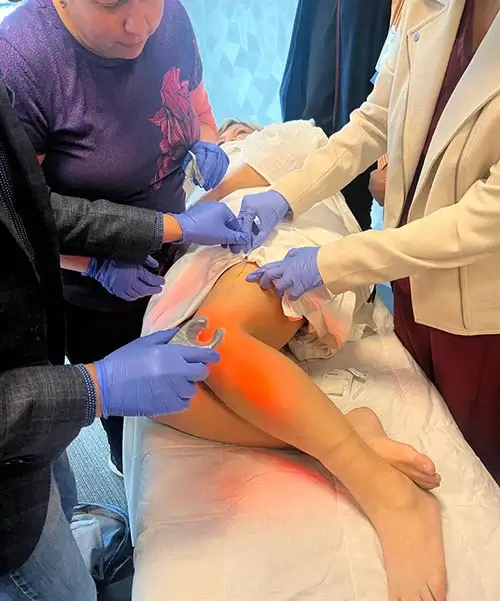6 Treatments for Getting Rid of Unsightly Leg Veins
By Dr. Stephen Cosentino
PRESIDENT OF EMPIRE MEDICAL TRAINING
Unsightly leg veins take several different forms. But all are, well, unsightly. Whether you suffer from varicose veins, spider veins, or reticular veins, you’re here because you’re wondering how to get rid of them.
You’ve come to the right place. After a brief overview of the types and causes of unsightly leg veins, we’ll dive into the most effective remedies.
Types & Causes of Unsightly Leg Veins
Varicose and spider veins are the two best-known types of unsightly leg veins. Reticular veins are another frequent source of cosmetic complaints. Here’s the lowdown on each.
Reticular Veins
Reticular veins are larger veins (typically greater than 2 millimeters) that can bulge or distend through the skin. They’re not as unsightly as varicose or spider veins but can darken or otherwise become more noticeable with age.
Varicose Veins
Varicose veins are smaller and darker than reticular veins. They’re often dark red or blue in color and form telltale zigzag patterns on the surface of the skin. They’re caused by blood flow issues due to weakened or damaged veins. While not considered dangerous for most people, severe varicose veins may lead to higher risk of blood clots.
The risk of developing varicose veins increases with age, medical, and lifestyle factors, such as smoking, excessive weight, and sitting or standing for long periods.
Spider Veins
Also known as telangiectasias, spider veins are similar in appearance to varicose veins. However, they have three important differences.
First, they’re smaller than varicose veins, hence the name (think of how thin a spider’s legs are). Second, they’re usually lighter in color, often pink or even whitish. Finally, they’re sometimes caused by an underlying autoimmune disease that requires more comprehensive treatment.
Sometimes, telangiectasias cluster together to form patches called matted telangiectasias. These are larger and more noticeable than singular telangiectasias, but fortunately they respond to the same treatments.
Treatment Options for Telangiectasias & Other Unsightly Leg Veins
Most leg vein treatments are noninvasive or only minimally invasive, and some require limited medical supervision.
1. Regular Exercise
Exercise isn’t a miracle cure, but it’s the easiest way for most people to prevent the appearance of varicose veins and spider veins, and to reduce the growth of existing leg vein issues.
2. Leg Elevation
Keeping the legs elevated for long periods — two hours or more — is another easy way to treat unsightly leg veins. It’s also comfortable!
3. Compression Stockings
Truly effective leg vein treatment requires blood flow modification. Compression stockings are the least invasive way to do this, though they’re uncomfortable for some patients.
4. Superficial Laser Treatment
Laser therapy is an accepted, well-studied option for treating varicose veins and spider veins. Targeted laser pulses may clear the treated area of spider veins within hours. Multiple treatments may be necessary for larger varicose veins, but they should disappear within weeks to months.
5. Endovenous Laser Treatment
This is a newer option for the treatment of telangiectasias and varicose veins that prove resistant to superficial laser therapy. It is slightly higher risk as well.
6. Sclerotherapy
Sclerotherapy is a chemical treatment that irritates the vein walls and helps clear the “backflow” responsible for unsightly veins. For best results, it may be combined with local massage, compression stockings, and a graduated exercise regimen.


